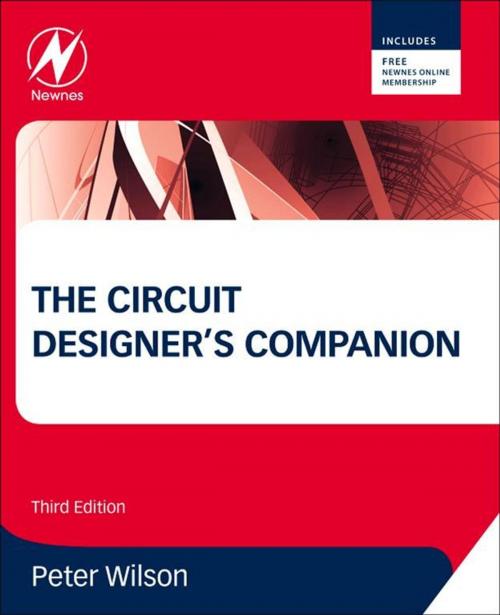| Author: | Peter Wilson | ISBN: | 9780080971476 |
| Publisher: | Elsevier Science | Publication: | November 16, 2011 |
| Imprint: | Newnes | Language: | English |
| Author: | Peter Wilson |
| ISBN: | 9780080971476 |
| Publisher: | Elsevier Science |
| Publication: | November 16, 2011 |
| Imprint: | Newnes |
| Language: | English |
The Circuit Designers Companion, Third Edition, provides the essential information that every circuit designer needs to produce a working circuit, as well as information on how to make a design that is robust, tolerant to noise and temperature, and able to operate in the system for which it is intended. It looks at best practices, design guidelines, and engineering knowledge gained from years of experience, and includes practical, real-world considerations for components and printed circuit boards (PCBs) as well as their manufacturability, reliability, and cost. Organized into nine chapters, the book begins with a discussion of grounding and wiring of electronic or electrical circuits, when to consider grounding, and the main factors that must be taken into account when designing a new PCB. It then introduces the reader to passive components such as resistors and capacitors, potentiometers and inductors, and crystals and resonators, as well as active components like diodes, thyristors and triacs, bipolar transistors, junction field-effect transistors, metal-oxide-semiconductor field-effect transistors (MOSFETs), and insulated gate bipolar transistors (IGBTs). It also describes high-speed digital circuit design and analog integrated circuits, including operational amplifiers and comparators, and power supplies such as batteries. The final two chapters focus on electromagnetic compatibility and the latest advances in electronics, along with safety considerations in the design of electronic equipment. This book is an invaluable resource for circuit designers and practicing electronics engineers, electronic engineering students, and professors.
- An invaluable companion for circuit designers and practicing electronics engineers – gives best practices, design guidelines and engineering knowledge gleaned from years of experience
- Includes practical, real-world considerations for components, PCBs, manufacturability, reliability and cost, enabling engineers to design and troubleshoot faster, cheaper and more effectively
- Contains new material on design tools and communication devices, high-speed digital circuit design, simulation methods and testing
The Circuit Designers Companion, Third Edition, provides the essential information that every circuit designer needs to produce a working circuit, as well as information on how to make a design that is robust, tolerant to noise and temperature, and able to operate in the system for which it is intended. It looks at best practices, design guidelines, and engineering knowledge gained from years of experience, and includes practical, real-world considerations for components and printed circuit boards (PCBs) as well as their manufacturability, reliability, and cost. Organized into nine chapters, the book begins with a discussion of grounding and wiring of electronic or electrical circuits, when to consider grounding, and the main factors that must be taken into account when designing a new PCB. It then introduces the reader to passive components such as resistors and capacitors, potentiometers and inductors, and crystals and resonators, as well as active components like diodes, thyristors and triacs, bipolar transistors, junction field-effect transistors, metal-oxide-semiconductor field-effect transistors (MOSFETs), and insulated gate bipolar transistors (IGBTs). It also describes high-speed digital circuit design and analog integrated circuits, including operational amplifiers and comparators, and power supplies such as batteries. The final two chapters focus on electromagnetic compatibility and the latest advances in electronics, along with safety considerations in the design of electronic equipment. This book is an invaluable resource for circuit designers and practicing electronics engineers, electronic engineering students, and professors.
- An invaluable companion for circuit designers and practicing electronics engineers – gives best practices, design guidelines and engineering knowledge gleaned from years of experience
- Includes practical, real-world considerations for components, PCBs, manufacturability, reliability and cost, enabling engineers to design and troubleshoot faster, cheaper and more effectively
- Contains new material on design tools and communication devices, high-speed digital circuit design, simulation methods and testing















